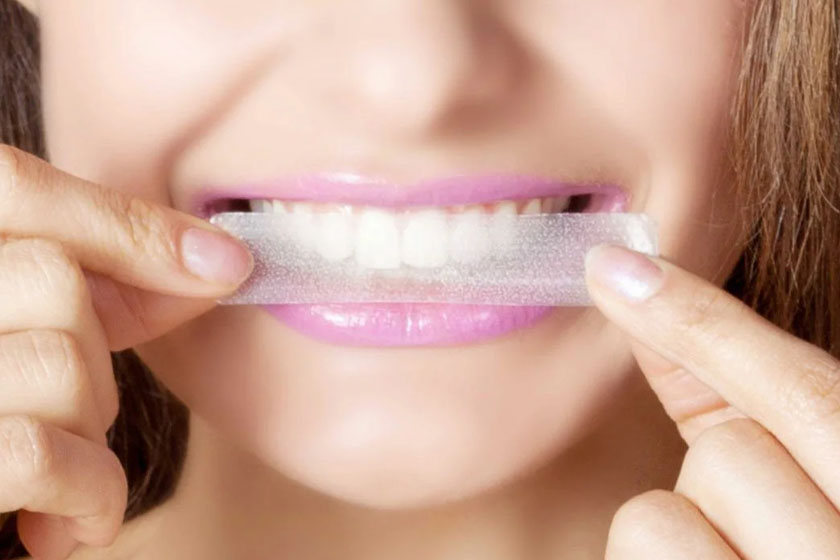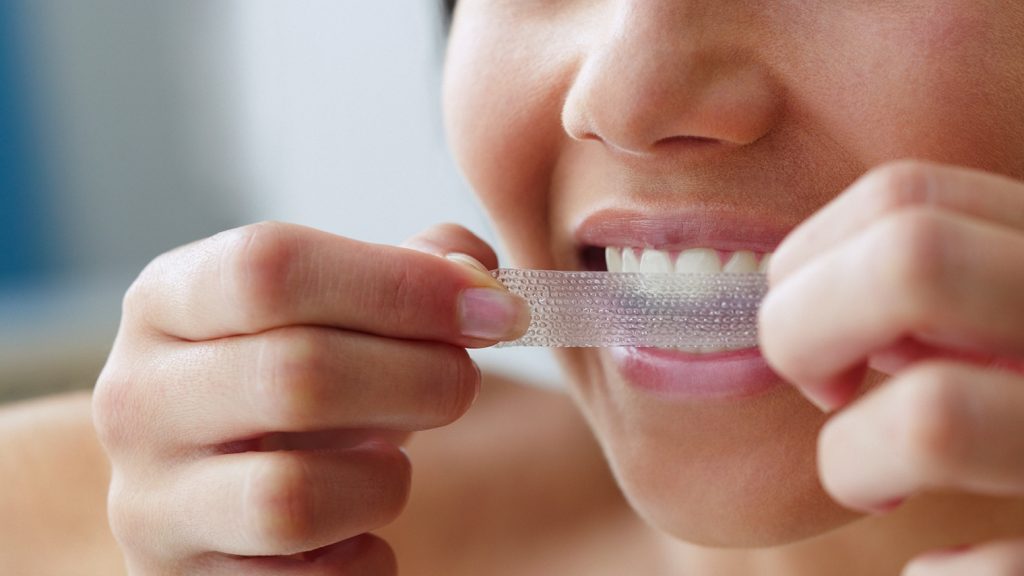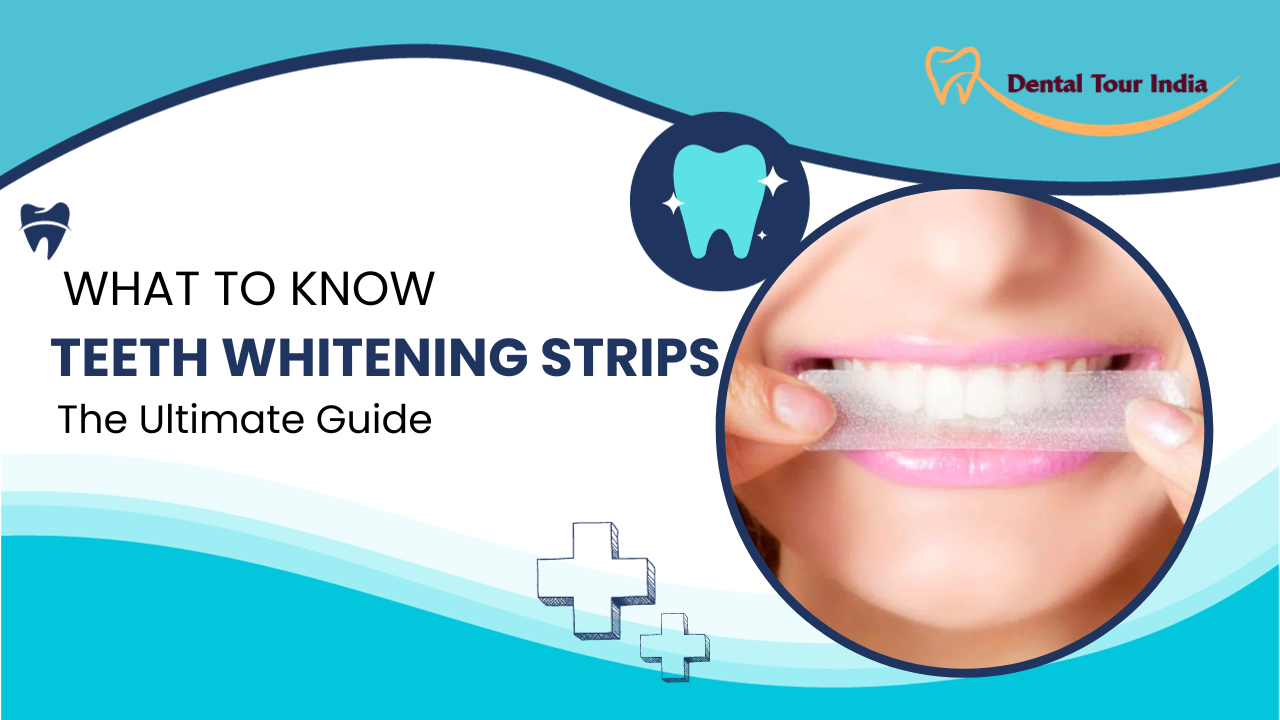A bright, radiant smile is a confidence booster, and many people seek teeth whitening solutions to achieve that coveted pearly white grin. Among the plethora of options available, teeth whitening strips have gained popularity for their convenience and effectiveness.
In this ultimate guide, we will delve into the world of teeth whitening strips, exploring what they are, how they work, their benefits, potential risks, and essential tips for achieving a whiter smile.

What Are Teeth Whitening Strips?
Teeth whitening strips are thin, flexible plastic strips coated with a peroxide-based gel. They are made to be applied directly to the surface of your teeth. The peroxide gel works by breaking down stains on the enamel and whitening your teeth over time. These strips come in various brands and formulations, with differences in the strength of the peroxide and the recommended usage duration.
How Do Teeth Whitening Strips Work?
The primary ingredient in teeth whitening strips is usually hydrogen peroxide or carbamide peroxide. When applied to your teeth, these chemicals break down into oxygen molecules, which penetrate the enamel and dentin to target and dissolve the discolored molecules responsible for staining. This process gradually lightens the color of your teeth, resulting in a whiter smile.

Benefits of Using Teeth Whitening Strips
- Convenience: Teeth whitening strips are very easy to use and can be used in the comfort of your home. This convenience is a significant selling point for those who prefer an at-home whitening solution.
- Cost-Effective: Compared to professional dental treatments, teeth whitening strips are often more budget-friendly while still delivering noticeable results.
- Gradual Whitening: Teeth whitening strips offer gradual whitening, reducing the risk of sudden and overly white teeth. This gradual process allows you to achieve a more natural-looking smile.
- Accessibility: Teeth whitening strips are readily available in drugstores and online as well, making them accessible to a wide range of consumers.
- Minimal Sensitivity: Many teeth whitening strips are designed to minimize tooth sensitivity, making them suitable for those with sensitive teeth.
Risks and Considerations While Using Teeth Whitening Strips
- While teeth whitening strips are generally safe, there are some risks and considerations to keep in mind:
- Tooth Sensitivity: Some users may experience increased tooth sensitivity during or after using whitening strips. This sensitivity is usually temporary but can be uncomfortable.
- Gum Irritation: Improper application of strips or using them for longer than recommended can lead to gum irritation or damage. It’s essential to follow the instructions carefully.
- Uneven Results: Teeth whitening strips may not provide uniform results, especially if your teeth have uneven staining or discoloration.
- Limited Whitening: Whitening strips are most effective for removing surface stains. They may not be as effective for deep, intrinsic stains or discoloration caused by certain medications or dental conditions.
- Short-Term Results: The effects of teeth whitening strips are not permanent and may require periodic touch-ups to maintain the desired level of whiteness.

Tips for Using Teeth Whitening Strips Effectively
To get the best results and minimize the risks associated with teeth whitening strips, follow these essential tips:
- Consult Your Dentist: Before applying teeth whitening product, it’s a good idea to consult with your dentist to ensure that you’re a suitable candidate and to address any dental concerns.
- Read and Follow Instructions: Always read and follow the manufacturer’s instructions included with the whitening strips. Pay attention to recommended usage times and frequency.
- Start Slowly: If you’ve never used teeth whitening strips before, start with a lower-strength product to gauge how your teeth react and to minimize the risk of sensitivity.
- Protect Your Gums: Be careful when applying the strips to avoid contact with your gums. If you notice any irritation, stop the usage immediately.
- Be Consistent: Consistency is key to achieving effective results. Stick to the recommended treatment schedule for the best outcome.
- Limit Staining Foods and Beverages: During your whitening treatment, try to avoid or reduce the consumption of foods and drinks that can stain your teeth, like coffee, red wine, and berries.
- Maintain Good Oral Hygiene: Continue to practice good oral hygiene, like regular flossing and brushing, to help maintain your results and keep your teeth healthy.
Conclusion
Teeth whitening strips can be an effective and easy way to achieve a brighter, more confident smile. However, it’s essential to understand how they work, their benefits, potential risks, and how to use them effectively. By following the tips mentioned in this ultimate guide and consulting with your dentist, you can enjoy the benefits of teeth whitening strips while minimizing any potential drawbacks. Remember that a beautiful smile not only boosts your self-esteem but also leaves a long-lasting impression on those you meet.

